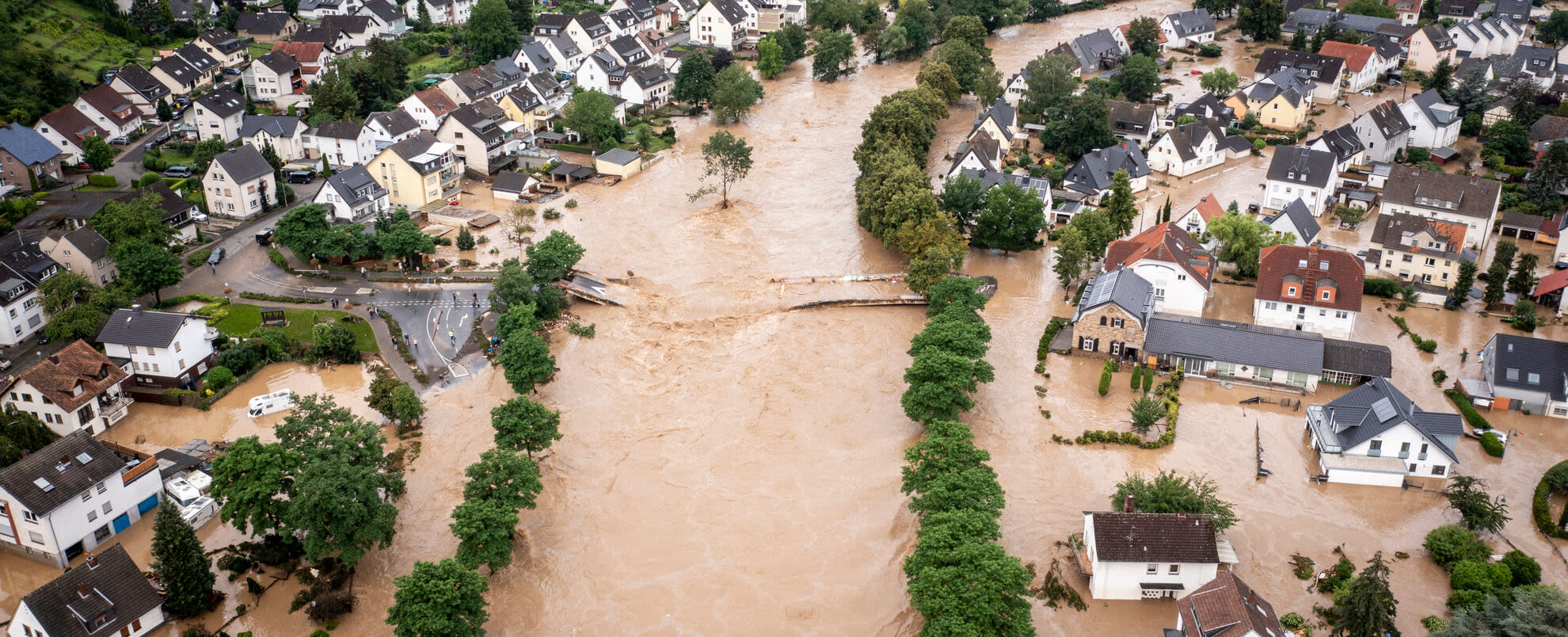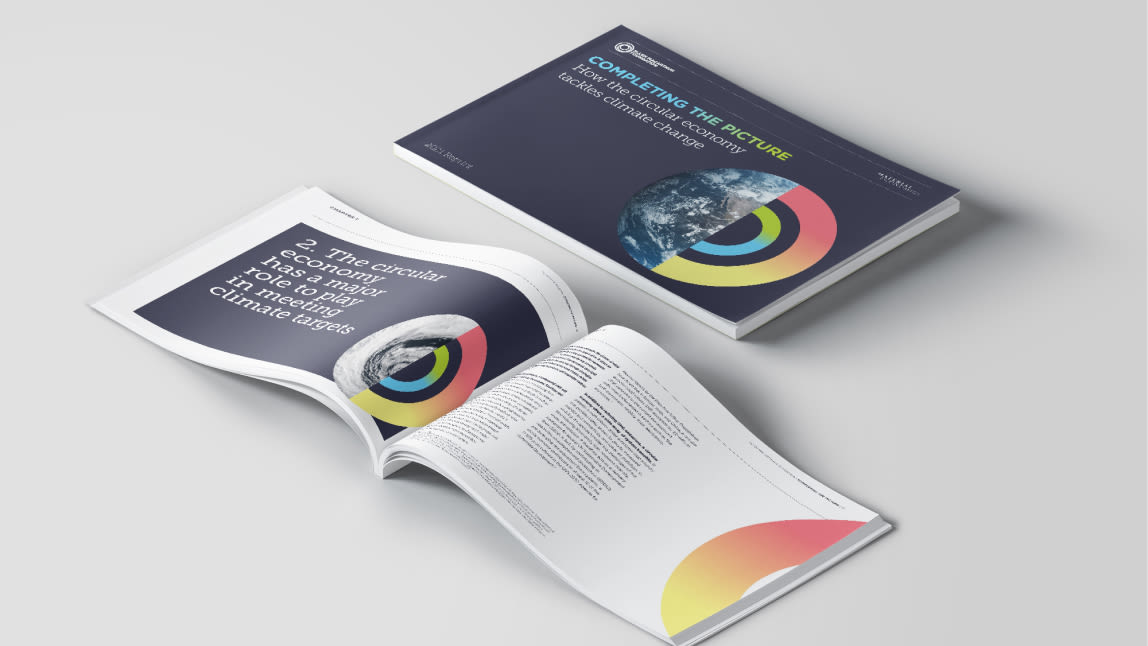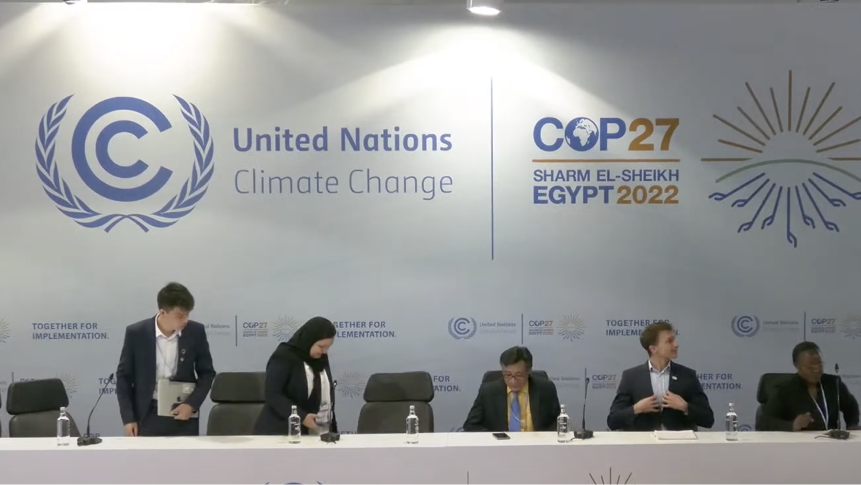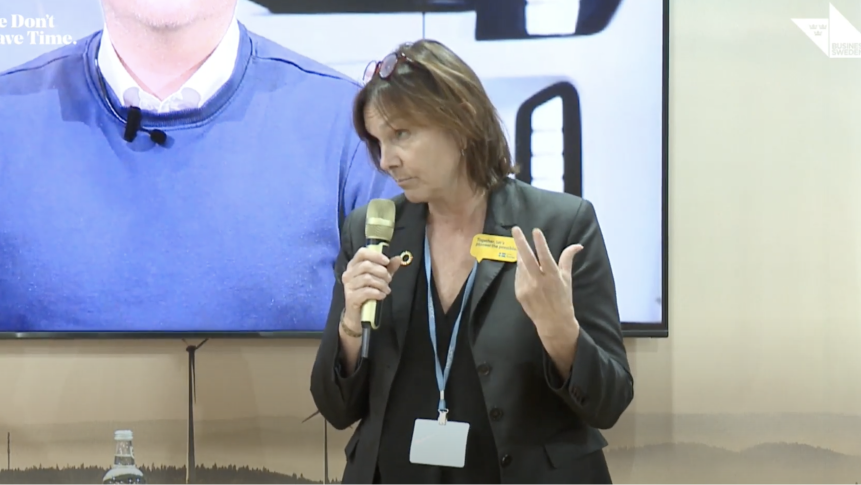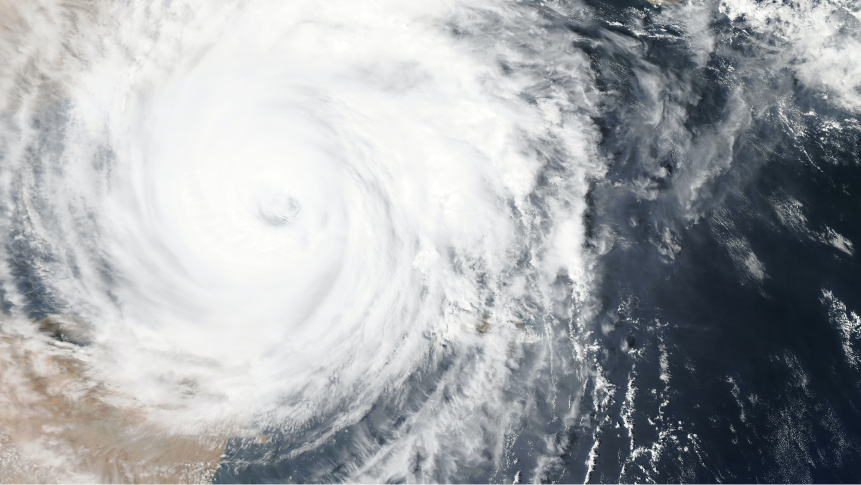For decades, approaches to climate action have been siloed into mitigation and adaptation. Yet, to respond to the climate crisis, we must find systemic, synergistic solutions which act on both urgently. Can the circular economy be part of bridging the adaptation gap?
By Emma Elobeid, Senior Editor, and Miranda Schnitger, Climate Lead, Ellen MacArthur Foundation
“Adapt or perish” – so says nature’s inexorable imperative, science fiction’s original earworm, and many an unimaginative climate change headline. While its inherent hopelessness could be challenged, the increasing intensity of climate change certainly brings H.G. Wells’ famous quote into contemporary focus.
Responses to climate change are often split into two philosophical and practical camps: mitigation and adaptation. They speak to a core climate question: should we focus our efforts on helping to solve (mitigate) climate change by cutting emissions or on preparing for (adapting to) its impacts? It is a divide that can be seen in policy responses, financial commitments, and business actions, often articulated in binary terms such as tackling either ‘symptoms or causes’. While some survey data suggests that these two critical approaches mirror a broader debate about prioritisation, it is clear that we need to both mitigate and adapt in parallel. As an analogy; if a bathtub is overflowing, you don’t just mop the floor, you need to turn off the taps.
Mitigation activities: actions designed to cut greenhouse gas emissions with the aim to keep climate change within a 1.5 degree temperature rise. Key mitigation targets include halving emissions by 2030, and achieving net zero by 2050.
Adaptation and resilience activities: actions designed to improve the resilience of our systems and communities to the effects of warmer climes and provide solutions that will work in a world that is 1.5 degrees hotter.
A circular economy can be a powerful mitigation strategy
In tackling the 45% of anthropogenic emissions that the renewable energyrenewable energyEnergy derived from resources that are not depleted on timescales relevant to the economy, i.e. not geological timescales. transition and energy efficiency measures cannot address on their own, a circular economycircular economyA systems solution framework that tackles global challenges like climate change, biodiversity loss, waste, and pollution. It is based on three principles, driven by design: eliminate waste and pollution, circulate products and materials (at their highest value), and regenerate nature. can form part of the multiple mitigation solutions we need. For example, emissions arising from land conversion and deforestation, high temperature requirements and emissions from chemical reactions associated with industrial processes, and end-of-life landfill and incineration are symptomatic of the way we currently produce, consume, and waste in a linear economylinear economyAn economy in which finite resources are extracted to make products that are used - generally not to their full potential - and then thrown away ('take-make-waste')..
Referring to the three circular economy principles, we know that:
when we eliminate waste and pollution, we can reduce and avoid emissions across the value chain;
when we circulate products and materials, we can enable embodied emissions to be retained within the economy;
when we regenerate nature and natural systems, we can improve carbon sequestration.
Many scientists are warning that the 1.5 degree emissions reduction pathway, upon which all previous mitigation targets have been set, is, without a significant step change, at risk of being missed. Meanwhile, the United Nations Environment Programme’s Emissions Gap Report 2022 tells us that Nationally Determined Contributions (NDCs) to emissions reduction point to a 2.6 degree increase in temperatures by 2100.
Mitigation strategies and activities are therefore essential for the long-term survival of humanity and stability of the planetary system.
Efforts must increase.
At the same time, it is increasingly recognised by IPCC climate scientists that the cumulative impacts of pre-Paris agreement emissions are locked in and unavoidable. Incidents, and in turn the costs, of the environmental, economic and social damage wrought by climate change are increasing, as noted by the UN Secretary General at the start of his speech before the last climate Conference of Parties (COP). Therefore alongside mitigation efforts, adaptation efforts must also increase.
Globally, momentum is growing to unite these once very separated climate actions. The 2021 Glasgow Climate Pact, for example, seeks to establish and align the two vital workstreams by requesting that countries both “urgently scale” their mitigation targets at the same time as committing to the Global Goal on Adaptation. Mitigation and adaptation should no longer be considered in isolation, but hand-in-hand, so that root causes and locked-in consequences are addressed together.
Therefore, areas for further exploration include:
How can solutions not only cut emissions but also help to create the conditions for a more resilient future?
As a systems solution framework designed to tackle some of the world’s most interconnected and urgent challenges, can the circular economy help us answer and action this vital question?
Can a circular economy support adaptation activities?
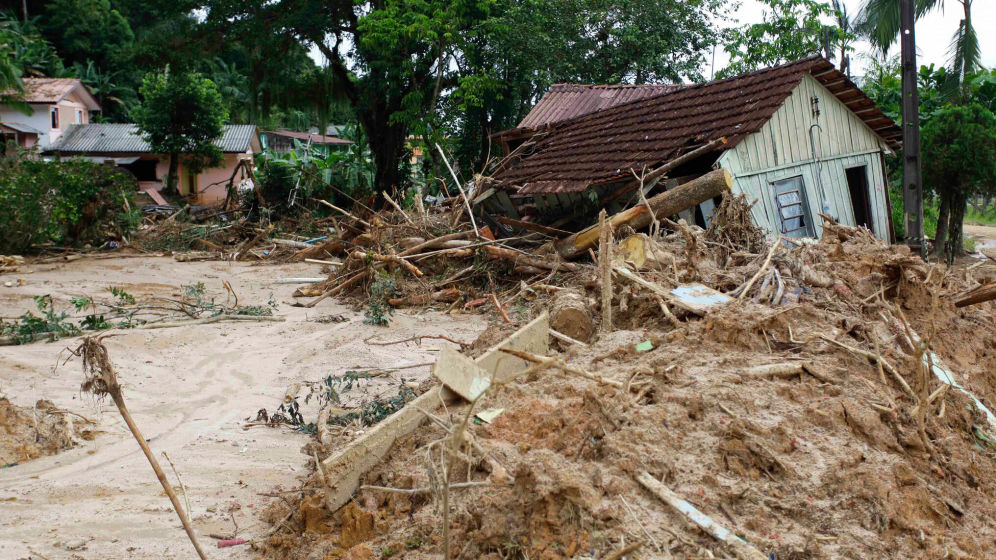
According to the IPCC, more than 3.5 billion people worldwide are highly vulnerable to multi-factoral climate impacts – particularly in major cities, coastal communities, and cross-continent regions of the Global South. In addition to the human cost, the disruptive impacts of climate change – on global trade and supply chains, food security, access to water, biodiversity and more – threaten our capacity to deliver a better future for society and the natural world. It also creates a highly unstable future for business and public services to operate in.
The relationship between a circular economy and climate adaptation has been less well mapped to date. However, the literature on climate adaptation and on circular economy are both centred on taking a holistic view of the complex systems on which our economies are built and in which they operate. This way, one can identify systemic solutions. Such commonality suggests a circular economy approach could support climate adaptation action.
In some sectors, the link is already more present. For example, the food system and conventional agriculture is a sector whose high-emissions profile and reliance on the stability of natural systems marks it as both climate-culpable and climate-vulnerable. Switching to regenerative agriculture is a key tenet of a circular economy for the food system. Employing agricultural practices that have regenerative outcomes has tended to be presented mainly as a mitigation strategy, by reducing carbon and methane emissions as well as waste and pollution. However, regenerative practices can also support adaptation and build resilience.
In a regenerative agricultural system, stabilised soil structures help to increase moisture retention and therefore reduce dependence on freshwater, enabling rural communities to farm in a way that builds soil resilience and adapts to a world of increasing resource-scarcity. At the same time, fields are fortified against heavy rainfall and flash flooding. Locking moisture and nutrients into the earth also helps crops adapt to changing weather patterns and safeguards yields against the impacts of extreme heat and prolonged drought.
It is not always easy to define and demarcate the differences between individual adaptation actions and their resulting resilience markers. However, the end result – a system which is both adjusted to and strengthened against the incoming impacts of climate change – is often the same.
In other sectors, we also see that a circular economy approach can offer ways to deliver on both mitigation and adaptation. For example, when we start to map circular economy strategies for mitigation against the areas for transformative adaptation potential assessed in the IPCC 2022 Impacts, Adaptation, and Vulnerability Report, additional synergies are revealed. Particularly within systems such as cities and the built environment, circular economy solutions are being shown to hold both mitigation and adaptation answers.
In the built environment, emissions can be cut through circular economy solutions such as elimination of climate-burdening construction materials and captured through alternative aggregates which sequester carbon dioxide. Besides these mitigation-focused benefits, applying circular economy principles for the built environment can also enable adaptation benefits. When structures (and the materials originally used to build them) are kept in use for as long as possible, functional adaptability is prioritised alongside durabilitydurabilityThe ability of a product, component or material to remain functional and relevant when used as intended.. Applying circular economy design choices can also help us to design for climate adaptability, such as modular flood defences, retrofitted protection against extreme weather, or renovations which provide cool – or warm – spaces.
Meanwhile, other biomimicry-inspired design approaches can also aid mitigation and adaptation: external living facades can absorb carbon dioxide and help to address anticipated climate risks to outdoor air quality by also absorbing nitrogen, sulphur dioxide, and particulates as well as preventing heat stress by providing a cooling effect, while gill-like openings can alleviate worsening indoor air quality related to climate change. Adaptation efforts in construction and the built environment are also being increasingly integrated into individual countries’ overarching climate action plans.
Beyond barricades: can a circular economy help enable behavioural, social and organisational adaptation?

In looking to better understand where climate-mitigating circular economy actions can also lead to a quantifiable adaptation benefit, it is helpful to consider the more qualitative symbiosis between the two. Some of the more socially nuanced adaptation outcomes can be supported by circular economy strategies. After all, adaptation is not just about physical measures, such as reinforced seawalls and buildings that can adapt. Adaptation measures which prepare communities and strengthen systems against approaching climate threats are also important.
After all, adaptation is not just about physical measures, such as reinforced seawalls and buildings that can adapt.
In our current linear food system, climate change-induced drought, floods, and other weather events expose structural supply chain insecurities which disrupt business operations and impact current and future ingredient supplies. Meanwhile, climate shocks also put access to essential nutrition at risk, making the food system a critical area for adaptation action. For the food system, therefore, adaptation involves strengthening both livelihoods and landscapes against the effects of climate change.
Various elements of a circular economy approach can help businesses and communities build resilience and safeguard against climate-related food insecurity, whilst also cutting emissions. For example, food businesses can be guided by the principles of the circular economy as they make ingredient selection and sourcing decisions. In addition to prioritising regeneratively produced ingredients, organisations can also use lower impact and diverse ingredients and upcycle byproducts of today’s waste for tomorrow’s food products. Moving away from monocultures which contribute to climate change by diversifying crops helps farmers to better recover from extreme weather events. Diversification also has business benefits. By reducing reliance on the same staple crops of a linear food system a circular economy approach to food can not only reduce vulnerability to whole-crop failure and protect against hunger and famine but also ensure the continuity of business operations. Other circular economy actions can also build social resilience in the face of regional and global shocks. Increasing local food production and consumption loops through community-supported agriculture can help build local networks of farmers and supply chains. This can improve self-sufficiency and strengthen regional food sovereignty, while supporting vital access to local food sources.
Though not always intentional, adaptive co-benefits from circular economy mitigation actions can be seen in other sectors too: fashion, for example. Just as with food, switching to regenerative methods of textile production in the field can help farmers of cotton and other natural fibres to prepare for (and therefore adapt to) hotter, wetter, more extreme growing conditions at the same time as sequestering carbon in the ground. In mitigation terms, a circular economy for fashion reduces collective climate impacts by decoupling revenue from production and resource use: using modelling based on a non-seasonal dress, circular economy business models can generate reductions of CO2e emissions of up to 47% (resale), 41% (rental), and 31% (repairrepairOperation by which a faulty or broken product or component is returned back to a usable state to fulfil its intended use.) compared to in a linear model. In connection with adaptation, such decreased material use helps to reduce businesses’ exposure to volatile market prices, aiding organisational resilience in an increasingly climate-disrupted operating space. In addition, systems which keep the materials we need in use can reduce the need for landfill and incineration –and the leakage of materials into the environment – thereby helping to keep natural ecosystems themselves intact and more resilient to extreme weather events.
Mitigation-motivated yet adaptation-enabling examples like this exist across the economy, from transport to consumer goods. In fashion, for example, models such as resale, rental, repair, and remanufacturing not only reduce emissions by increasing clothing utilisation but can also facilitate the kinds of community-based resource sharingsharingThe use of a product by multiple users. It is a practice that retains the highest value of a product by extending its use period. which support climate adaptation action. Whether we’re talking about dresses or dishwashers, promoting user-based access models can help diversify the way people access goods and services beyond ownership by increasing social capital and improving community capacity to respond to extreme weather events.
Mitigation, adaptation, and the circular economy: taking a systems-level approach to climate action
Interactions between human activity and climate change underscore the need for climate responses (both mitigation and adaptation) to consider the context of the whole system.
The nature of complex systems means that mitigation strategies can have positive unintended consequences for adaptation. Drawing out these interactions at a global level and in situ can help us to better understand how circular economy climate action might deliver adaptation outcomes as it mitigates, and vice versa. Acknowledging the complexity of the whole-system is crucial. Without proper consideration of these co-benefits and contraindications, unintended negative consequences are possible, leading to maladaptation.
Acknowledging the complexity of the whole-system is crucial.
While many regions and businesses are ramping up efforts to prepare for the impacts of climate change, certain isolated adaptation measures present a climate paradox. The construction of concrete sea defence walls and the installation of air-conditioning units, for example, can actively contribute – via their material and energy emissions – to climate change. It is therefore essential that adaptation responses support mitigation efforts.
The circular economy can help to achieve climate actions that mitigate emissions, and – through adaptation – build environmental, social and economic resilience. While it is easy for the impacts of climate change to feel apocalyptic, H.G. Wells had it all wrong. Even in the face of all that is heading our way in the coming months, years, and decades, our response options are not limited to “adapt or perish” but instead offer business and society an opportunity to “mitigate, adapt, and thrive.”
We thank colleagues and experts who have shared with us their reflections and insights in the development of this exploratory article.
